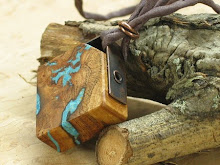One hundred years ago, Sir James George Fraser’s work The Golden Bough was released in its third edition. His work has been hailed as “one of the 20th centuries most influential books”. To his contemporaries it was a scandalous yet titillating illustration of primitive spiritual life. Fraser illustrates early methods of worship, strange rituals, sex practices, and elaborate festivals while providing a method of comparison to modern religion. His thoroughly scientific approach dispassionately delves into the sacred and his thesis asserts that mythology gave rise to religion which will ultimately be replaced by science.
The writings of Fraser helped establish anthropology as a legitimate study. Furthermore, his work influenced great authors such as T. S. Eliot, Ernest Hemingway, and James Joyce, the book can be seen in the background of the final scenes of Apocalypse Now, and is even quoted in the Doors song Not to Touch the Earth. And yet, his theory has not come to pass. We find ourselves now at a time when religion is not regarded as merely a “cultural phenomenon.” Acknowledging the inherent pull that nature has upon us has been incorporated into many people’s daily spiritual lives. What Fraser does is study the actions being taken by the participants in our early myths and religious practices and excludes the experiential nature of these sacred acts. What is the experience of the “savage” woodsman who sacrifices a chicken on the stump of the tree he has just felled? What does the villager in Burma feel as he names the largest tamarind tree and decorates it in hopes of rain? This type of questioning is the evolution of Sir James George Fraser’s work.
The natural world is fundamentally built upon the cycles of growth, decay, and passing away. Perhaps the fear of death is behind our “superstitions,” as Fraser calls them. But nature is undoubtedly able to elicit awe. We have not evolved so far as to remove ourselves from the magic still to be found in the natural world. Although the title of Fraser’s book is The Golden Bough, the central figure is the King of the Wood, and several chapters are devoted to tree worship, Fraser considers the role of trees, and nature as a whole, to be subordinate to almost all other factors. He also states that placing spirits within trees is merely a savage belief and is placing meaning where there is none. Fraser uses the example of Siamese monks who do not wish to break tree limbs unnecessarily. He declares, “Buddhist animism is common savage dogma incorporated in the system of an historic religion.”
Although, scientific reduction may propose that religion is the imposition of meaning where there is none, the same may be said for all perception. We may yet find that the ability to transcend the impulse to impose meanings is a profoundly spiritual process, perhaps even the very nature of enlightenment. For now, I am grateful for the gift to be able to perceive the beauty and deeper meaning implied by a neatly stacked pile of water smoothed rocks, or a consecutive array of silver swirls, or even the pencil black lines in wood on the verge of decay. In nature we can see ourselves and an opportunity to embrace ourselves as we are, seeing the imperfect as perfect.
Long Division: Historical note on how we got here.
11 months ago





